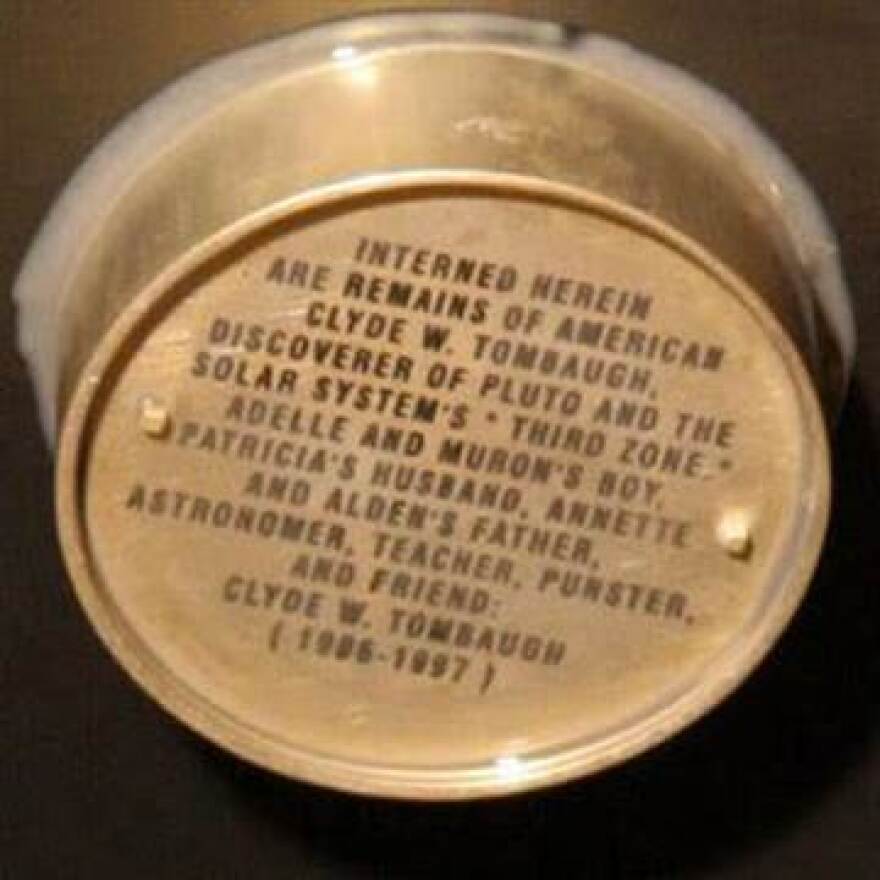Earlier today, after nearly a decade of interplanetary travel, NASA's New Horizons spacecraft recorded the first up-close images of Pluto. It was discovered in 1930 by astronomers at Lowell Observatory in Flagstaff. That's where Dr. Will Grundy works, he's a co-investigator for the New Horizons mission. Arizona Public Radio's Justin Regan spoke with him from Mission Control in Maryland about today's historic event.
JR: This is obviously a very big day for you and your team. What's the mood like in the control center right now? How are you feeling?
WG: Pretty euphoric. The spacecraft is too busy taking data right now to communicate with us, so we're not in communication, but this is exactly what it was designed for. So, we're pretty confident that it is doing its job and filling up the memories with some absolutely fabulous data.
JR: Tell us about the fly-by today. Can you tell us what you were able to see?
WG: Well, we see nothing yet. It's all an interesting dance of celestial mechanics and the limited speed of light. So the spacecraft, as you said, flew by Pluto and the Pluto system a while ago. It's now turning its cameras back towards the direction of the sun, and it's watching the sun set through Pluto's atmosphere and rise on the other side. And then we'll do the same thing behind Charon's atmosphere - if it has an atmosphere. That'll be a chance to discover something that hasn't yet been seen. We transmitted a radio transmission several hours ago from the deep space network that will arrive at Pluto just in time for New Horizons to watch that radio transmission through Pluto's atmosphere. And, of course, when it phones home it takes four and a half hours for the radio signal to come back down and be received at Earth, and we'll get that message this evening.

JR: How does the spacecraft give you the information? And when do we get to see these amazing pictures?
WG: So, the spacecraft works just like a camera on a cell phone where it takes a picture and saves it to the memory. To actually get the data home it needs to transmit it by radio. It's expensive to send radio from the far side of the solar system in terms of you need to transmit very slowly, so the data rate is quite slow. As Alan Stern explained this morning in the press conference, the sequence to get everything down is going to take something like 16 months. And, of course, just to be safe, you get down some high priority stuff right at the beginning and then you send down everything in a very highly compressed form, just to make sure it's on the ground in at least some form. And then you do the slog of getting everything down in uncompressed, pristine condition. So, by the end of next year we'll have everything on the ground. And believe me, we'll have some of the juicy bits down earlier because we really can't wait! But it's going to take a little while. We're going to keep making discoveries long after this fly-by because the data will arrive long after this fly-by.

JR: Though it is an unmanned spacecraft, there is a traveler aboard: the ashes of Clyde Tombaugh who discovered Pluto 85 years ago. Can you talk about this nod to the man who found Pluto?
WG: I didn't find out about it until a little bit later, after the launch, but that's right. There's a little metal cylinder glued to the side of the spacecraft that has some of Clyde Tombaugh's ashes in it. And so this is kind of a fitting tribute for the discoverer. He'll travel through the galaxy, basically for the rest of the galaxy's history because the spacecraft isn't likely to go anywhere near anything for a long time, just because space is so big and empty.
JR: Dr. Grundy, congratulations and thank you for your time today.
WG: You're welcome.


